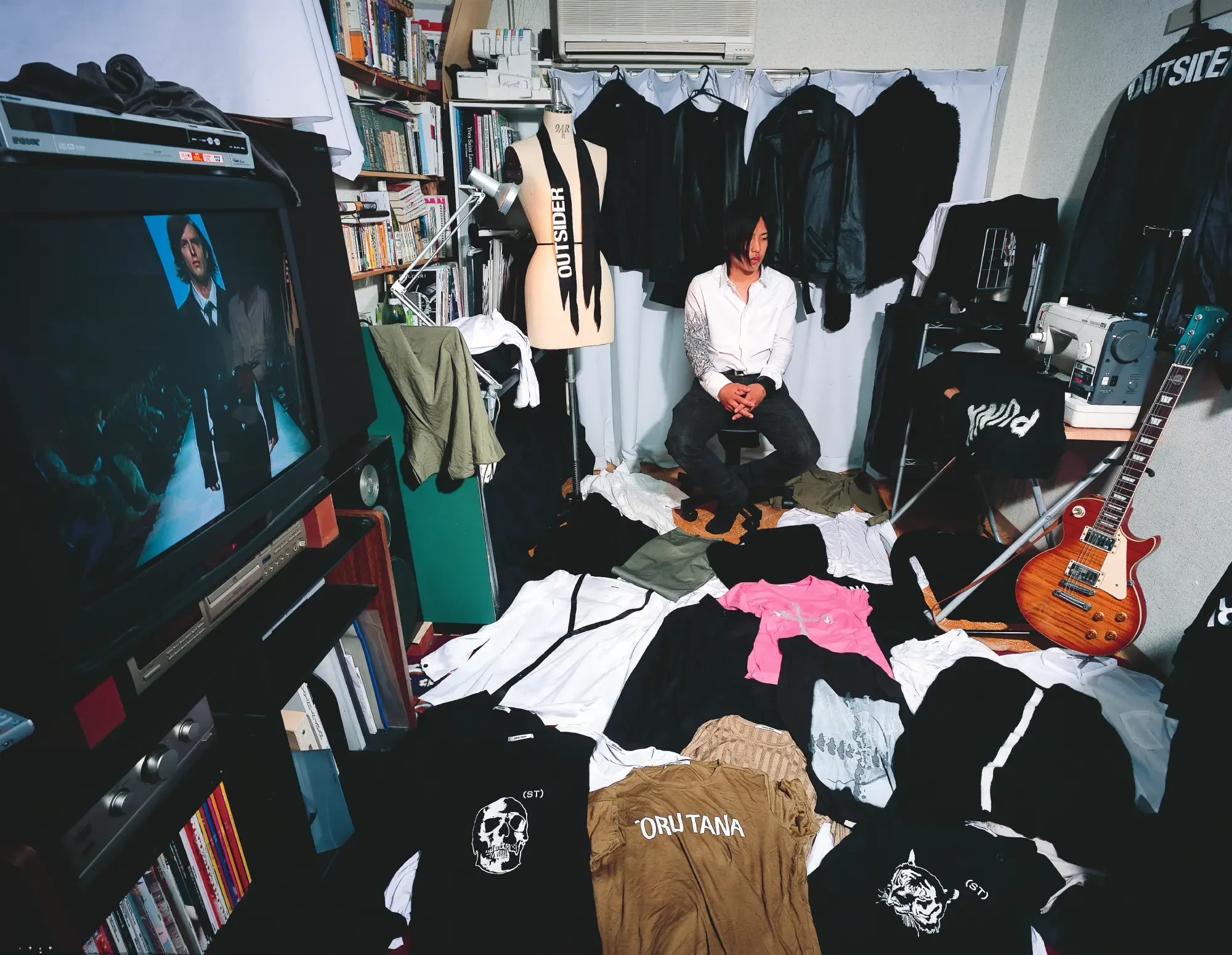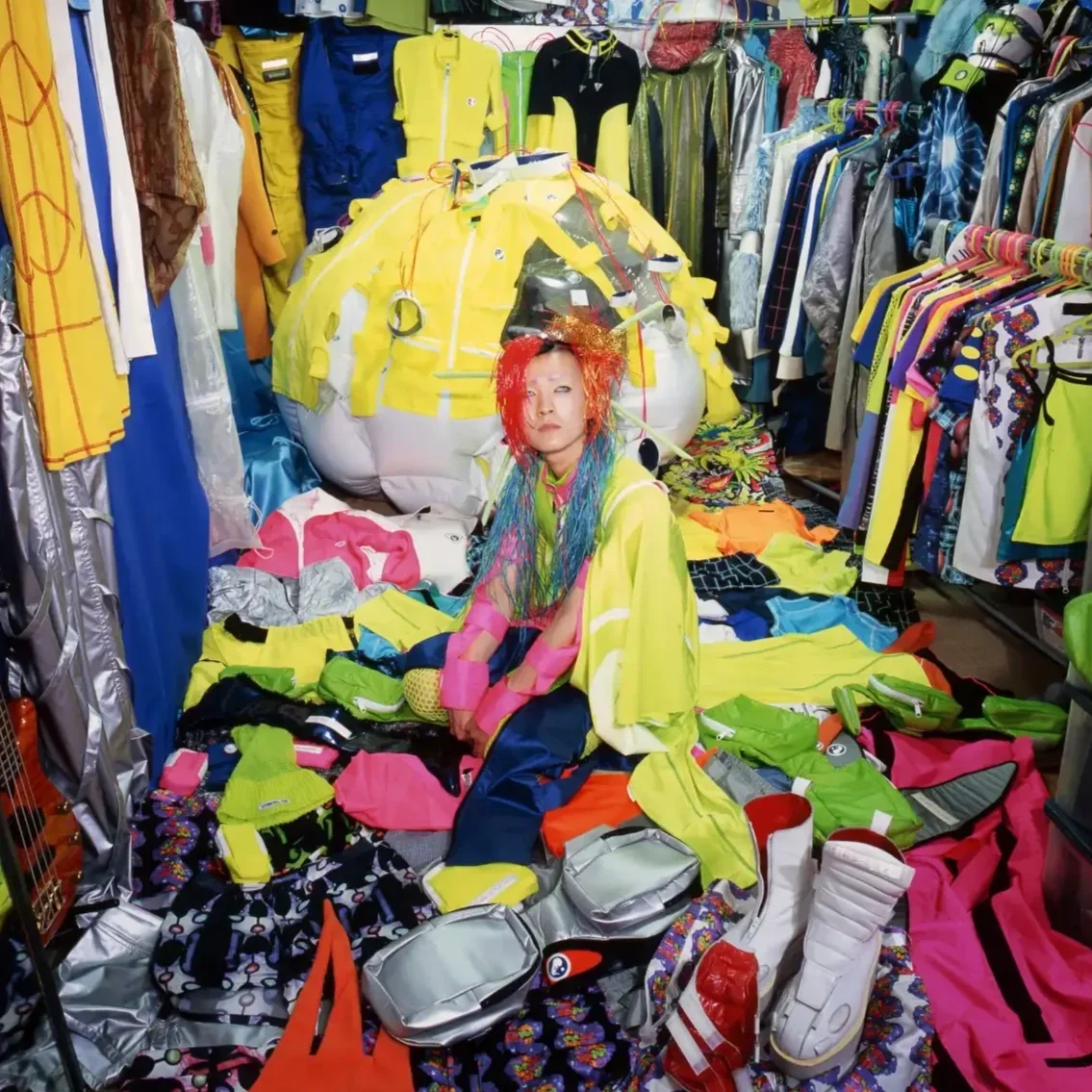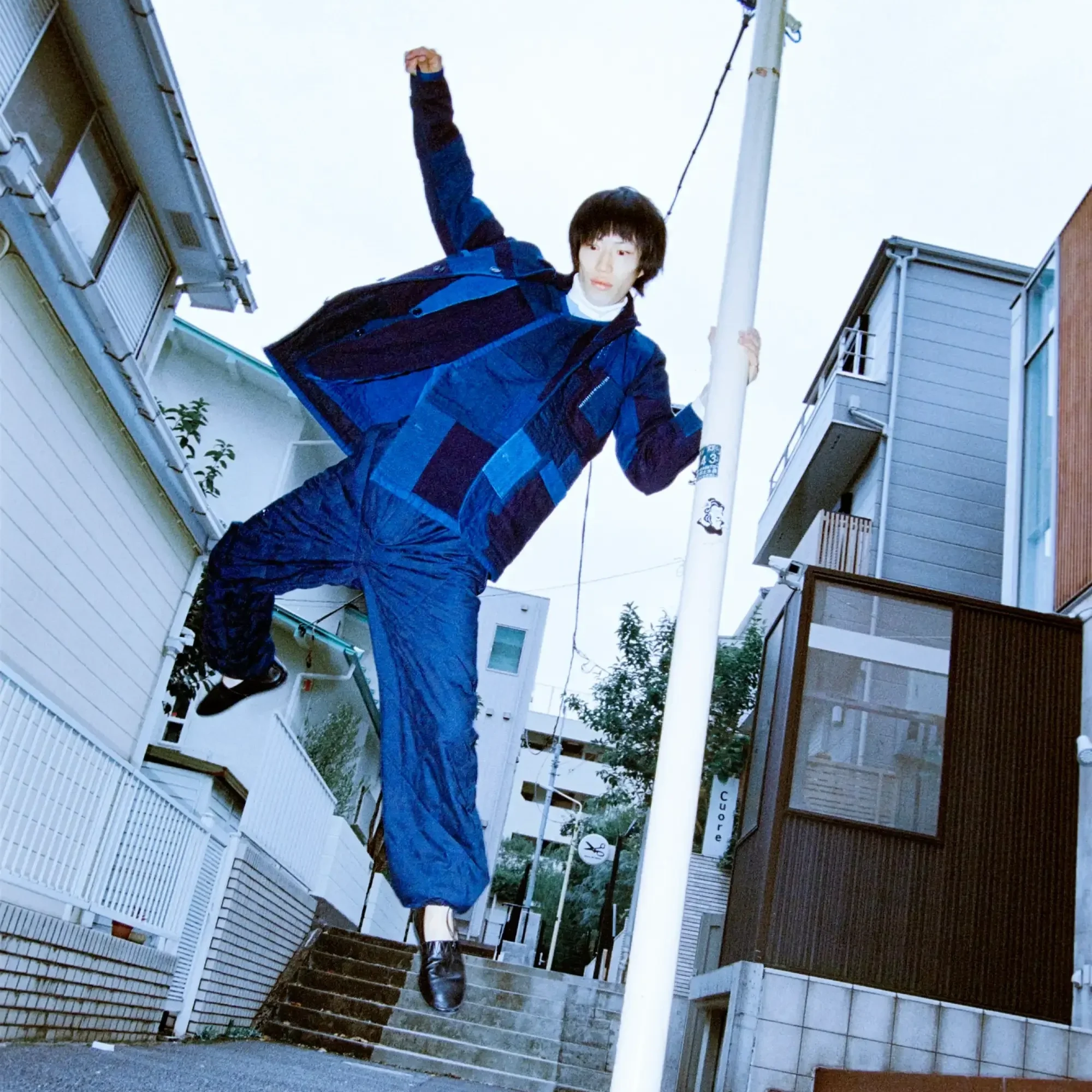Happy Victims Returns - Tsuzuki’s Portrait of Fashion-Filled Homes
© Kyoichi Tsuzuki
Happy Victims documents a specific kind of fashion consumer in Japan: individuals who build their entire living environments around the clothing brands they follow. Kyoichi Tsuzuki went off the streets, leaving the public setting behind, and entered straight into people’s homes, showing how fashion physically occupies rooms, furniture, and storage spaces.
First published in 1994, the photos include devoted followers of brands such as Comme des Garçons, Issey Miyake, Yohji Yamamoto, and Helmut Lang. In each case, the fashion pieces aren’t stored in closets but displayed on racks, stacked in piles, boxed, folded, or simply covering the entire floor. Shopping bags, hangtags, receipts, brand catalogs, and magazines are kept and arranged with the same care as the clothes themselves. The almost unrecognizable living spaces could easily pass as personal archives or stockrooms.
Tsuzuki’s background is in documenting urban lifestyles and niche Japanese subcultures. Long before Happy Victims, he had already stepped into private rooms for his cult classic Tokyo Style, a photo book that catalogued how people truly lived in cramped Tokyo apartments. Like Happy Victims, it avoided polish and embraced clutter. Both books have since been reissued by Apartamento, as the fascination with how space and lifestyle collide behind closed doors continues.
His approach in Happy Victims is observational. There is no staging or directing the subjects. Tsuzuki records the state of their rooms exactly as they are being lived in. The photographs show how fashion collecting can move beyond dressing and become a form of environmental organization. As beds become secondary, some rooms are so packed that there is barely space to walk.
None of the people featured in the book are fashion professionals. You’re looking at office workers, students, and clerks. Many even admit to rarely wearing the clothes outdoors. The act of collecting, owning, and arranging the garments is more important than the public display. Tsuzuki captures this relationship in a straightforward visual way through the arrangement of rooms and the presence of clothing in every corner.





Rather than analyzing or commenting, the photographs provide visual data: how many garments exist in one small room, how they are organized, what is prioritized, and what is sacrificed. In some cases, there is no sofa, but there are four clothing racks. In others, the kitchen has become a storage area for brand packaging.
Apartamento is now reissuing Happy Victims, preserving the original format and its intention, available here. The re-release allows new audiences to view Tsuzuki’s documentation of a particular Japanese consumer culture at a time when fashion collecting was not yet digital nor social media-driven. It remains one of the clearest visual records of how branding, personal identity, and private living space intersect.







How Yukinaga continues traditional techniques by working entirely in analog.